Rice is a staple food in many households, and the method of cooking it varies depending on the household’s preferences and equipment available. Two popular options for cooking rice are a rice cooker and a pot. While both appliances can get the job done, they have their differences. In this article, we will explore the pros and cons of cooking rice in a rice cooker versus a pot, providing you with the information you need to make an informed decision.
Key Takeaways:
- A rice cooker and a pot are two popular options for cooking rice
- Both appliances have their pros and cons
- Our article will explore the differences between using a rice cooker and a pot for cooking rice, helping you make an informed decision
Advantages of Using a Rice Cooker
Are you tired of cooking rice on the stovetop and ending up with either burnt or undercooked rice? Say hello to the rice cooker! This kitchen appliance has become a staple in many households due to its numerous advantages.
Automated Cooking
One of the best features of a rice cooker is its automated cooking process. All you have to do is measure the rice and water, add it to the pot, and select the appropriate setting. The rice cooker takes care of the rest, ensuring perfectly cooked rice every time. No more standing over a pot, stirring and watching the rice cook!
Precise Temperature Control
Rice cookers offer precise temperature control, which is crucial for cooking different types of rice. Some rice requires a higher temperature or longer cooking time, and a rice cooker can handle these variations with ease. Plus, it keeps the rice warm once it’s done cooking.
Easy Cleanup
Another advantage of using a rice cooker is the easy cleanup. Most rice cookers have non-stick surfaces that make it easy to remove any leftover rice. Plus, the removable inner pot can be washed in the sink or dishwasher. No more scraping rice off the bottom of the pot!
Customer Reviews:
“I never knew cooking rice could be so easy until I got my rice cooker. It’s a game-changer!” – Emily
“I love my rice cooker’s automatic shut-off feature. I don’t have to worry about burning the rice anymore!” – John
Overall, a rice cooker is a convenient and reliable appliance that saves time and effort. With numerous features and benefits, it’s a great investment for any rice lover. Check out our rice cooker reviews to find the best one for you!
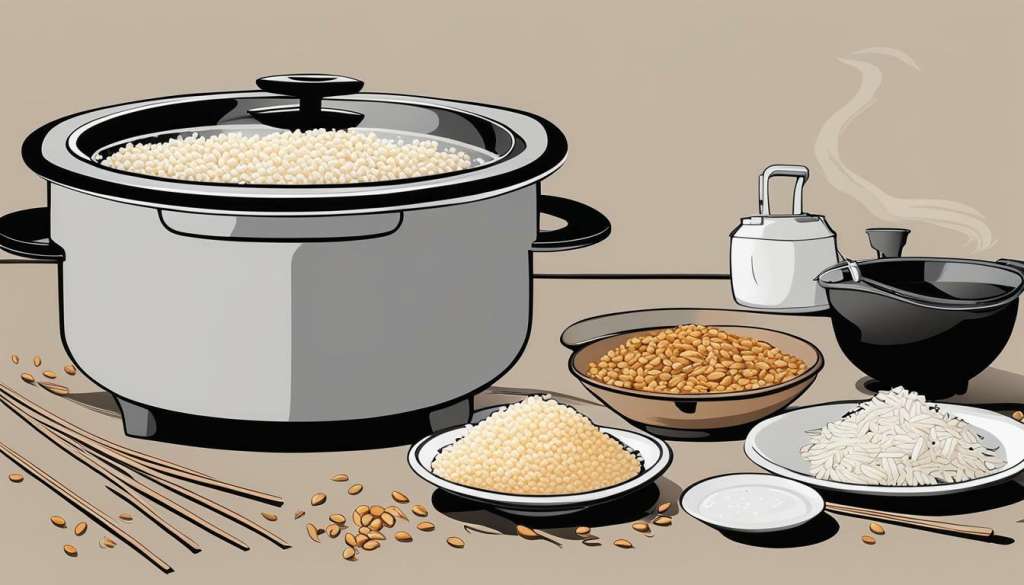
Advantages of Using a Pot for Cooking Rice
If you are looking for versatility and cost-effectiveness, cooking rice in a pot may be the right option for you. Despite the numerous features of a rice cooker, some people still prefer the traditional method of cooking with a pot. Below are some of the advantages of using a pot for cooking rice:
| Advantages | Pot Features | Pot Benefits |
|---|---|---|
| 1. Versatility | A pot can be used for different types of cooking, such as boiling, simmering, and frying. It can also accommodate a wide range of cooking styles, from stovetop to oven cooking. | The versatility of a pot allows you to cook a variety of dishes with just one kitchen appliance, making it a cost-effective option. |
| 2. Cost-Effectiveness | A pot is a low-cost investment that can last for years. It does not require electricity or specialized equipment, making it an affordable option for many households. | Using a pot for cooking rice can help you save money on your electricity bill and reduce your carbon footprint. |
| 3. Large Quantity Cooking | A pot provides more space for cooking than most rice cookers. This makes it a great option if you need to cook rice for a large family or for entertaining guests. | You can cook more rice in a pot compared to a rice cooker, saving you time and effort in cooking multiple batches. |
Based on pot reviews, users appreciate the sturdiness and durability of a pot, as well as its versatility in the kitchen. While cooking rice in a pot may require more attention and monitoring compared to a traditional rice cooker, it offers a more hands-on, customizable approach to cooking.
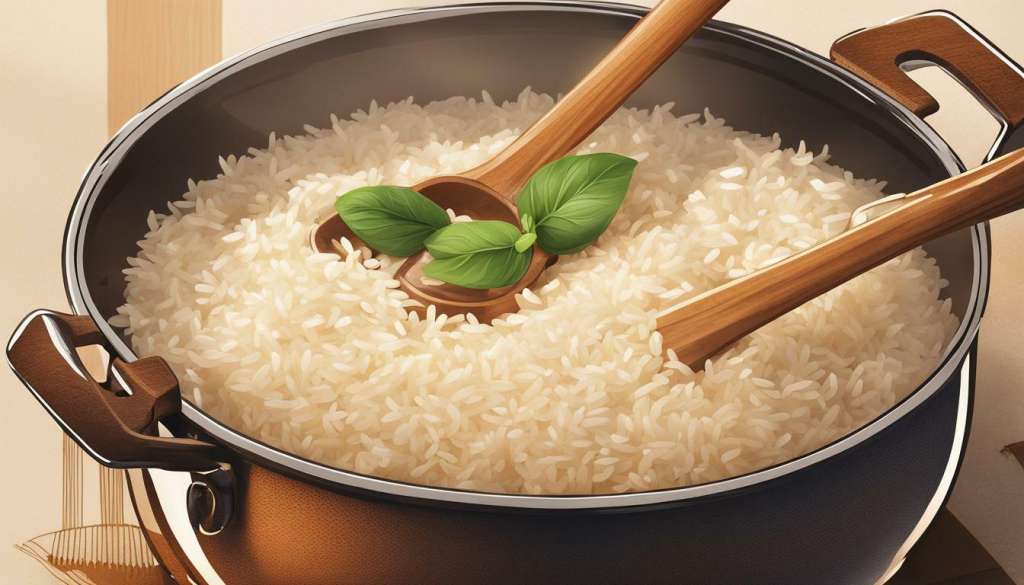
Cooking Rice in a Rice Cooker
If you’re looking for a hassle-free way to cook rice, a rice cooker can be your perfect choice. Not only is it easy to use, but it also produces perfectly cooked rice every time. Here are the steps to cook rice in a rice cooker:
- Measure the desired amount of rice and add it to the rice cooker.
- Rinse the rice with water until the water becomes clear. This removes excess starch and helps prevent clumping.
- Add the appropriate amount of water according to the rice cooker’s instructions. The rice-to-water ratio may vary depending on the type of rice being cooked.
- Close the lid and select the appropriate setting on the rice cooker. Most rice cookers have different settings for white rice, brown rice, and sushi rice.
- Wait for the rice cooker to finish cooking. The cooker will turn off automatically when the rice is done.
- Let the rice sit for a few minutes to allow it to steam and absorb any remaining water.
- Fluff the rice with a fork and serve.
Cooking rice in a rice cooker is not only easy but also saves time and frees up space on your stovetop. With precise temperature control and automated cooking, you can achieve perfectly cooked rice every time.
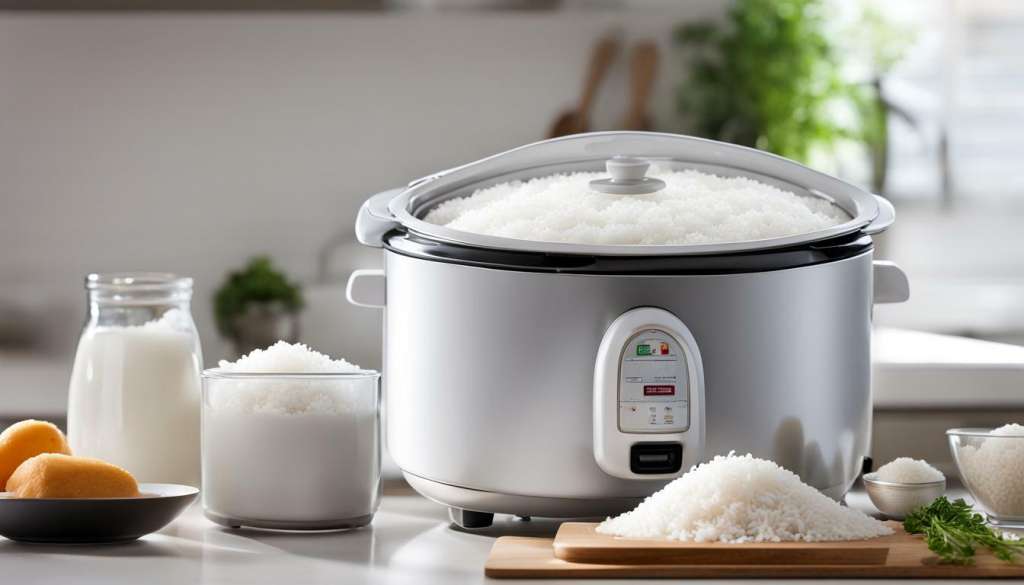
Cooking Rice in a Pot
If you don’t have a rice cooker, cooking rice in a pot can be just as easy and yield delicious results. Here’s how.
First, rinse the rice in cold water until the water runs clear. This helps to remove excess starch and any impurities. Then, combine the rice and water in a pot in a 1:2 ratio, that is, one cup of rice to two cups of water. Add a pinch of salt to enhance the flavor.
Place the pot on the stovetop and bring it to a boil over high heat. Once it reaches a boil, reduce the heat to low and let it simmer with the lid on for about 18 minutes. Avoid stirring the rice during this time as it can make it sticky.
After 18 minutes, turn off the heat and let the rice sit for another 5-10 minutes with the lid on. This helps the rice to absorb any remaining water and become fluffy. Fluff the rice with a fork before serving.
When it comes to the best pot for cooking rice, choose one with a tight-fitting lid to prevent steam from escaping. A heavy-bottomed pot is also preferred as it helps to distribute heat evenly, preventing the rice from burning.
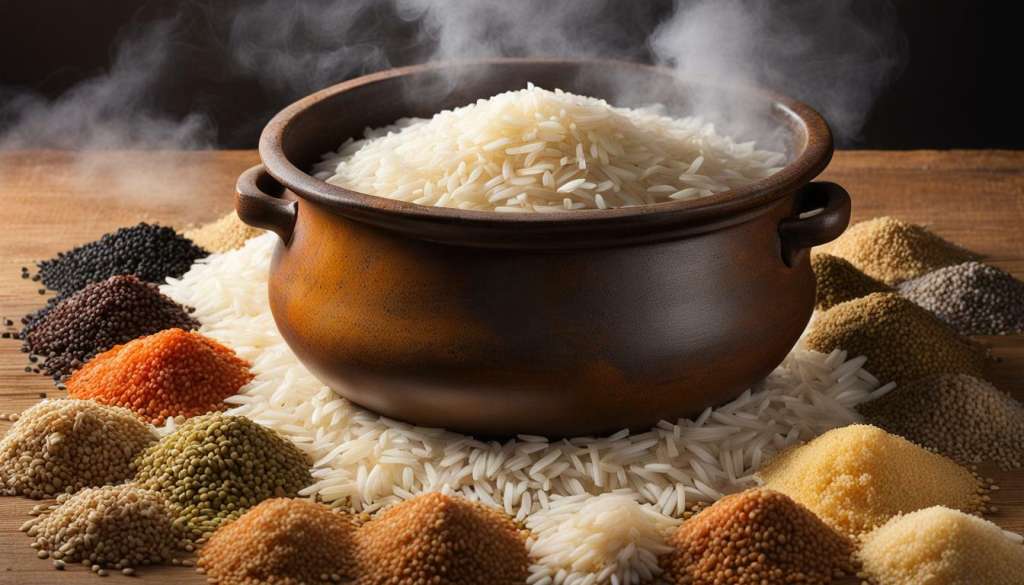
Pro Tip: If you’re short on time, try parboiled or quick-cooking rice which can be ready in as little as 10 minutes.
Rice Cooker Vs Pot: Cooking Time and Convenience
When it comes to cooking rice, time and convenience are essential factors to consider. A rice cooker offers a time-saving advantage as it allows you to set it and forget it while the rice cooks in the background. You can multitask and attend to other chores while the rice is being cooked. On the other hand, a pot requires constant monitoring and attention to ensure that the rice does not burn or overcook.
Using a pot to cook rice can take longer than using a rice cooker, especially if you are cooking large quantities. However, with a rice cooker, you can cook rice uniformly, even if you are cooking a small or large quantity. A rice cooker ensures that the rice cooks evenly by maintaining a consistent temperature throughout the cooking process.
In terms of convenience, a rice cooker is easy to use. All you need to do is add the rice, water, and select the appropriate setting. The rice cooker does the rest. With a pot, you have to monitor the rice as it cooks, stirring occasionally and adjusting the heat as needed to prevent burning or overcooking.
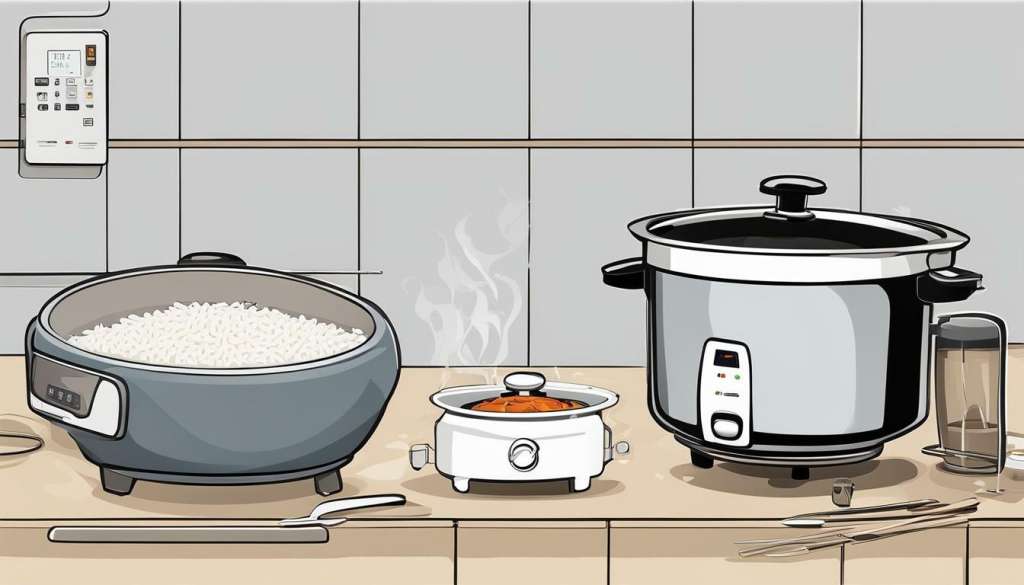
Overall, while a pot can be used to cook rice, a rice cooker provides a more convenient and time-efficient option. It allows you to achieve perfectly cooked rice with minimal effort and eliminates the risk of burning or overcooking. However, the choice between a rice cooker and a pot ultimately depends on personal preferences, cooking needs, and budget.
Rice Cooker Vs Pot: Versatility and Capacity
When it comes to cooking rice, both rice cookers and pots have their unique benefits and limitations. In terms of versatility and capacity, however, there are some notable differences between the two.
Rice Cooker
A rice cooker is specifically designed to cook rice, and some models are designed to cook multiple types of rice, including white, brown, sushi, and even quinoa. This makes it a versatile appliance for those who enjoy a variety of rice dishes.
Rice cookers also come in a range of sizes, from compact models that can cook up to 3 cups of rice to larger models that can cook up to 20 cups of rice. This makes rice cookers suitable for households of different sizes.
Pot
A pot, on the other hand, is a more versatile appliance that can be used for cooking a range of dishes, not just rice. While it may not be designed specifically for cooking rice, pots can still be used to cook rice effectively.
However, pots may have limitations in terms of their capacity. Smaller pots may only be able to cook a few cups of rice, while larger pots may not be available for households with limited kitchen space.
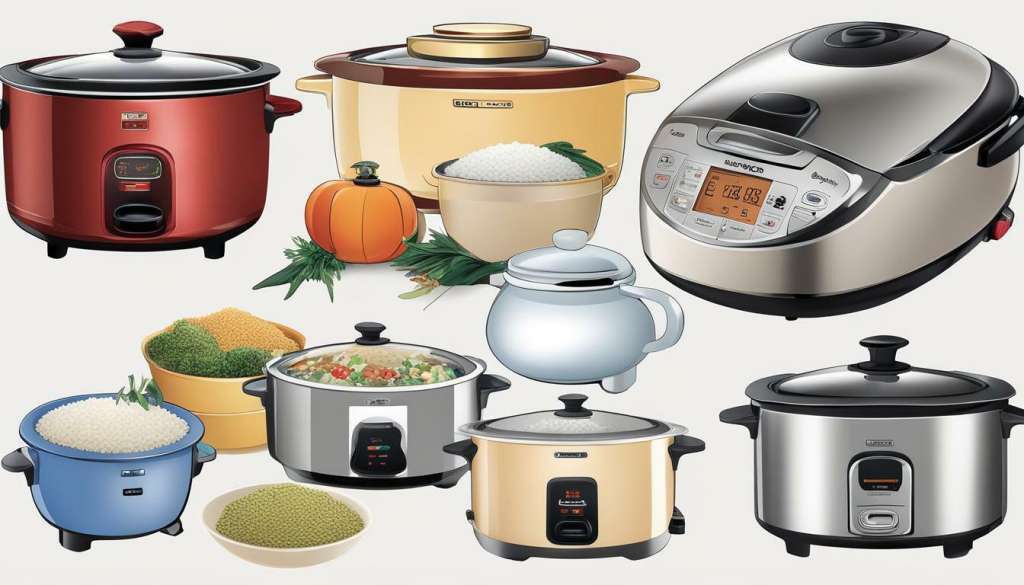
Overall, the choice between a rice cooker and a pot for cooking rice comes down to personal preference and individual needs. If you enjoy a variety of rice dishes and are looking for an appliance that can cook rice to perfection, a rice cooker may be the better option. However, if you prefer a multi-functional appliance that can also be used for other dishes, a pot may be a better choice.
Rice Cooker Vs Pot: Maintenance and Durability
When it comes to maintenance and durability, both rice cookers and pots have their pros and cons.
Rice Cooker Maintenance: Rice cookers are generally easy to clean and maintain. Most models come with a non-stick coating that prevents rice from sticking to the inner pot, making it easy to wipe clean with a damp cloth.
Some rice cookers also have a removable inner pot, which can be washed in a dishwasher for added convenience. It’s important to follow the manufacturer’s instructions when cleaning and maintaining your rice cooker to ensure it lasts for many years.
Pot Maintenance: Pots require a bit more effort to clean, especially if rice has stuck to the bottom. It’s important to soak the pot in warm soapy water before scrubbing it with a non-abrasive scrubber. If rice has burned onto the pot, it may be necessary to boil some water in the pot with a little vinegar to loosen the rice before cleaning it.
Rice Cooker Durability: Rice cookers are generally durable appliances that can last for many years with proper care. However, some models may be more prone to wear and tear due to frequent use. It’s important to invest in a high-quality rice cooker from a reputable brand to ensure it lasts for the long term.
Pot Durability: Pots can also be durable appliances with proper care. However, over time, the constant use of heat can cause wear and tear on the pot, which can affect its cooking performance. It’s important to invest in a high-quality pot that can withstand high heat and wear and tear.
Overall, both rice cookers and pots require maintenance and care to ensure they last for many years. While rice cookers may be easier to clean, both appliances can be durable with proper care. It’s important to invest in a high-quality appliance that meets your cooking needs and preferences.
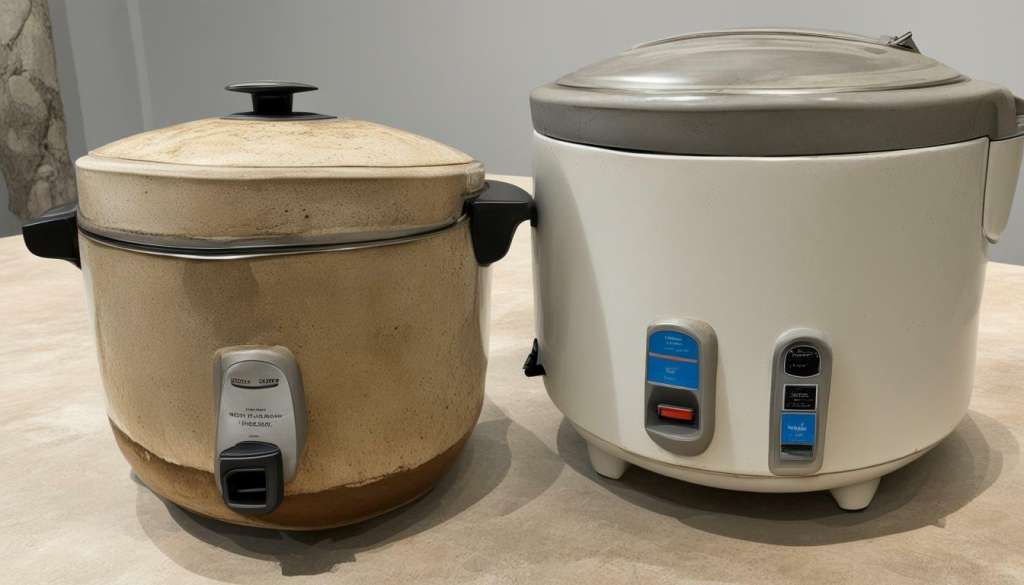
Cost Comparison: Rice Cooker Vs Pot
When it comes to cost, the choice between a rice cooker and a pot for cooking rice largely depends on individual needs and preferences. While a pot is a standard kitchen tool that most households already have, a rice cooker can be a more significant investment.
The average cost of a reliable rice cooker can range anywhere from $30 to $200, depending on the brand, features, and capacity. However, it is important to note that purchasing a rice cooker can be a one-time expense, and it may last for several years with proper maintenance.
In contrast, using a pot for cooking rice is a more cost-effective option in the short-term. Most pots range anywhere from $15 to $60, and they can last for many years. However, using a pot requires constant monitoring and attention, which can be time-consuming and may not be suitable for busy households.
Moreover, pots can be less efficient in terms of energy consumption, especially if you have an electric stove. Boiling water in a pot can take longer and require more energy than a rice cooker, which can impact your utility bill in the long run.
In summary, while a pot can be a more cost-effective option in the short-term, a rice cooker can be a more efficient and long-lasting investment in the long-term. At the same time, the choice between the two largely depends on individual preferences, lifestyle, and budget.
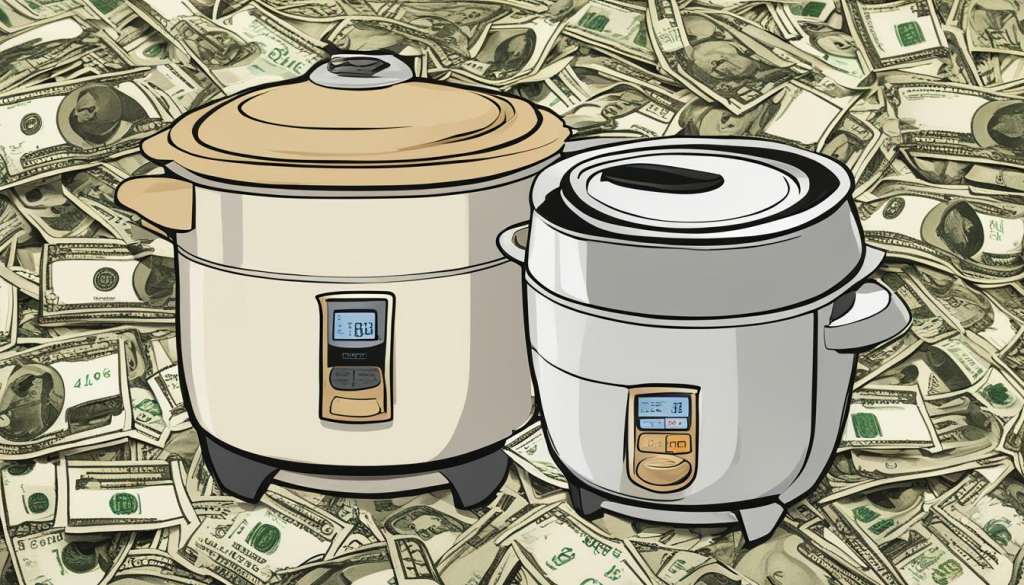
Rice Cooker vs Pot: Conclusion
After evaluating the advantages and disadvantages of using a rice cooker versus a pot for cooking rice, the decision ultimately depends on individual preferences and needs.
If you are looking for convenience, precise temperature control, and easy cleanup, a rice cooker may be the better option for you. It can save time and allow you to multitask while the rice is cooking. Plus, the automated cooking process ensures that you get perfect rice every time.
However, if you prefer versatility, cost-effectiveness, and the ability to cook larger quantities, then a pot may be a better choice for you. It is also useful for cooking other dishes besides rice.
Final Verdict
Ultimately, whether you choose a rice cooker or a pot depends on your priorities. Both have their advantages and disadvantages, and the final decision should be based on your individual needs and preferences.
Regardless of your choice, it is essential to consider the maintenance and durability of the appliance to ensure long-term satisfaction with your purchase. We hope this article has given you valuable insights that will help you make an informed decision.
If you have any questions or comments, feel free to leave them below. Happy cooking!
FAQ
Q: What are the main differences between a rice cooker and a pot for cooking rice?
A: Rice cookers and pots have different features and functionalities. Rice cookers are specifically designed for cooking rice and offer automated cooking, precise temperature control, and easy cleanup. On the other hand, pots are more versatile and can be used for cooking various dishes, including rice. Pots also tend to be more cost-effective and have larger cooking capacities compared to rice cookers.
Q: What are the advantages of using a rice cooker?
A: Using a rice cooker offers several advantages. It provides automated cooking, so you can set it and forget it. Rice cookers also offer precise temperature control, ensuring perfectly cooked rice every time. Additionally, they are easy to clean and maintain. Many users also appreciate the convenience and time-saving benefits of using a rice cooker.
Q: What are the advantages of using a pot for cooking rice?
A: Using a pot for cooking rice offers versatility and cost-effectiveness. Pots can be used for various cooking purposes, not just rice. They are also more affordable compared to rice cookers. Additionally, pots have larger capacities, making them suitable for cooking larger quantities of rice or other dishes.
Q: How do I cook rice in a rice cooker?
A: To cook rice in a rice cooker, start by rinsing the rice to remove excess starch. Add the desired amount of rice and water to the rice cooker, following the recommended rice-to-water ratio. Close the lid and select the appropriate settings on the rice cooker. The rice cooker will automatically cook the rice to perfection.
Q: How do I cook rice in a pot?
A: To cook rice in a pot, start by rinsing the rice to remove excess starch. Add the desired amount of rice and water to the pot, following the recommended rice-to-water ratio. Place the pot on the stovetop and bring it to a boil. Once boiling, cover the pot with a lid and reduce the heat to low. Let the rice simmer for the recommended cooking time, then fluff it with a fork before serving.
Q: How does the cooking time and convenience compare between a rice cooker and a pot?
A: A rice cooker offers faster and more convenient cooking compared to a pot. Rice cookers automate the cooking process and require minimal monitoring. This allows for multitasking while the rice is being cooked. On the other hand, cooking rice in a pot takes longer and requires constant monitoring to prevent burning or overcooking.
Q: How does the versatility and capacity compare between a rice cooker and a pot?
A: Rice cookers are more limited in terms of the types of rice that can be cooked, as they are specifically designed for rice. Pots, on the other hand, can be used for various cooking purposes and can accommodate different types of rice. In terms of capacity, rice cookers come in various sizes, while pots generally have larger capacities, making them suitable for cooking larger quantities of rice or other dishes.
Q: What about the maintenance and durability of rice cookers and pots?
A: Rice cookers are generally easy to clean and maintain. They often come with removable inner pots that can be washed separately. Pots also require regular cleaning but may be more prone to food sticking and require more scrubbing. In terms of durability, both rice cookers and pots can last for a long time with proper care and usage.
Q: How does the cost of using a rice cooker compare to using a pot?
A: The initial investment for purchasing a rice cooker can be higher compared to using a pot for cooking rice. However, the ongoing costs of using a pot, such as the cost of fuel or electricity for stovetop cooking, should also be taken into consideration. In the long run, the cost difference between a rice cooker and a pot will depend on individual usage and preferences.


